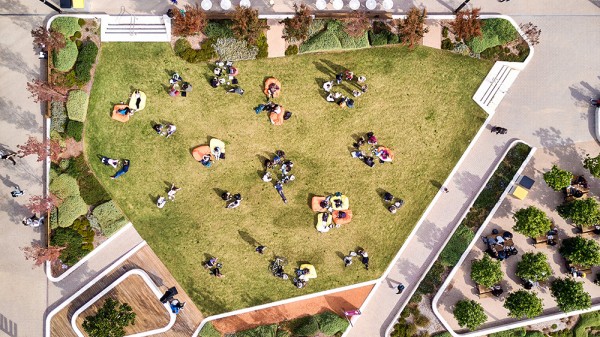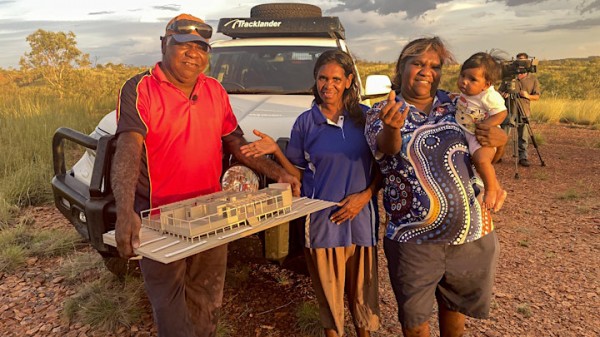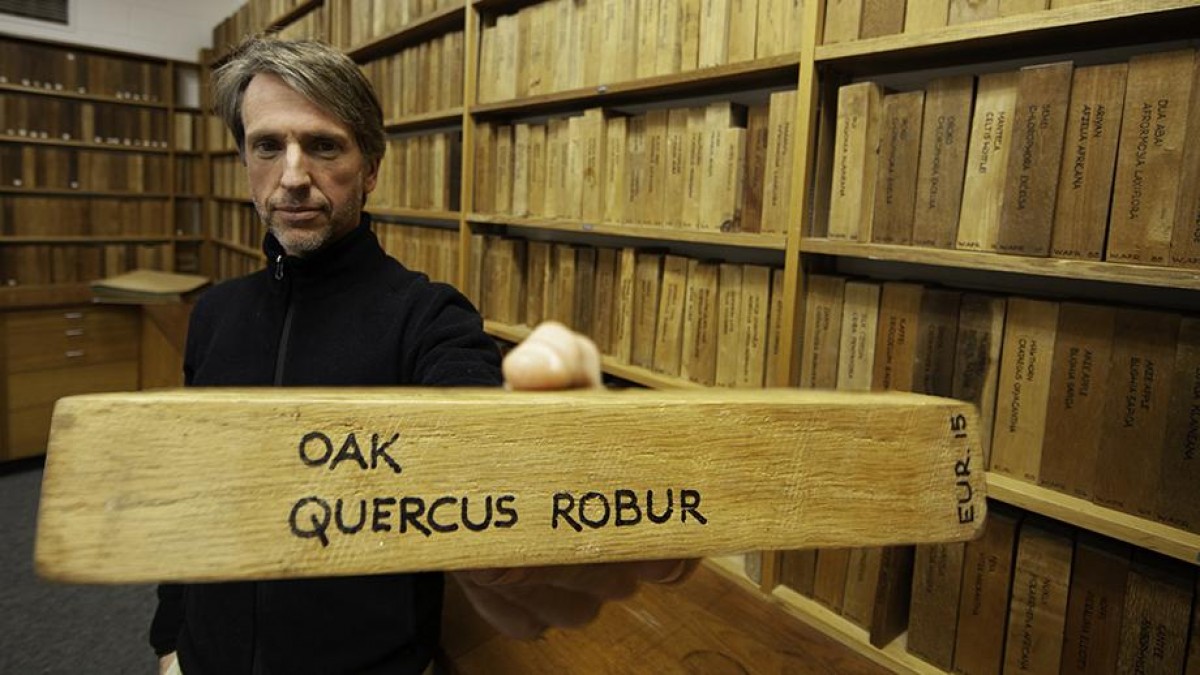Our Lord of the rings
Q&A: Dr Matthew Brookhouse
Dr Matthew Brookhouse, BSc (Forestry) ’97, PhD ’08, loves to peer back through time by examining the growth rings from trees. Yes, he’s a dendrochronologist. And he’s made an amazing discovery about a Henry VIII portrait. Ross Peake reports.
What happened with the painting?
We established that the tree most likely grew in the Sussex region in the south east corner of England.
I was approached out of the blue by the Art Gallery of NSW to examine a sixteenth-century portrait painted on an oak panel. The gallery had an approximate date of production for the portrait, which had been in storage since its purchase in 1961, but asked me to use dendrochronology to confirm that date.
There is very little documentation associated with the panel – it wasn’t known when or where it was painted.
I naturally felt nervous about handling a 500-year-old artefact. Using a microscope attached to a camera, I examined the growth rings visible on the edge of the panel, but the wood was rough-sawn and had been contaminated in places by glue and surface treatments.
I was unable to achieve sufficient accuracy so I used a high-resolution image of the panel’s wood grain generated by the Australian Synchrotron at the request of the gallery. This allowed me to measure tree-ring widths across the entire panel.
This panel was made from a single quarter-sawn section from English oak. That method of cutting produces a highly stable piece of timber as well as a continuous tree-ring series running through the panel. The latter is essential for tree-ring dating.
It’s obviously also important that the timber bears clear, annual tree rings. For English oak – and many other northern hemisphere tree species – each year of growth produces one ring.
While the synchrotron image allowed tree-ring counting and measurement, I didn’t know what years they corresponded to – where in time the chronology sat.
How did you solve this problem?
Working with an undergraduate Honours-pathway student, we downloaded tree-ring chronologies from European tree-ring databases and successfully dated the panel against a composite United Kingdom chronology. It was a wonderful and surprising outcome and was the first time synchrotron imagery had been used for panel dating.
A network of dated tree-ring chronologies exists throughout Europe. The network of chronologies in UK is so dense that we can determine not only precisely when the timber was formed, but also where the tree from which it was cut, grew. Really, this is the kind of thing that first got me interested in tree-ring analysis.
Using our data, we can date the last measurable ring to 1480 – that was the last year of growth. While we can say that definitely, we must add on estimates of 20 to 40 years to account for the sapwood rings that were removed when the panel was created. This means the earliest possible felling date for the tree that provided the panel was 1500 to 1520.
And what’s truly amazing about the dendrochronology libraries available in the UK is that they allow dendro-provenancing. We established that the tree most likely grew in the Sussex region in the south east corner of England.
How did your career lead to ANU?
I did a forestry degree here at ANU when Dr John Banks was a Lecturer. After the second year of my degree, I worked for Forestry Tasmania. When I came back, I began concurrent Honours and worked with John on eucalypts.
Tree-ring data is useful for developing growth models for commercial forestry, so after Honours I went to work for the Victorian Government using eucalypt tree-ring analysis in forest inventory and modelling. At that time, the use of eucalypt tree-rings was rare because of difficulties associated with poor tree-ring formation in the genus.
I worked in that field for seven years and then came back to ANU to do a PhD.
The reason I came back was that it became clear to me the trees we were sampling from across all of Victoria were showing very similar year-to-year variations in tree-ring width.
I knew enough at that stage, having worked for years in the field, completing Honours on eucalypts and working with John, that variations between years that are consistent between trees across a large area, are really the consequence of climate and not the consequence of a smaller scale, forest-stand level factor.
Further, when you observe growth of entire forest landscapes varying consistently from year to year, you’re left with climate variability as the only factor capable of driving forest growth at that scale. Of course, at that point it was just an observation, based on the experience of thousands of pieces of wood that we’d collected, but it genuinely seemed that climate variation was being recorded by eucalypts.
Was this significant?
Yes, that was the point at which I decided to come back to do a PhD – A Dendroclimatological Reconnaissance of Eucalypts in Southeast Australia. Up until that time, eucalypts had not really been useful in climate-based studies.
Eucalypts are highly opportunistic in their growth in response to highly variable water availability, frequent disturbance and insect defoliation. Therefore, it’s exceptionally difficult to identify simple linear relations between climate and tree-ring width in eucalypts as we might do in other species, such as oak.
Dendrochronological study of eucalypts is highly nuanced and, prior to my PhD, a clear relation between eucalypt tree rings and climate had not been established.
What’s your current position?
I’m now a Senior Lecturer at the Fenner School of Environment and Society and my office adjoins part of the excellent wood library in the Forestry Building. Known as a xylarium, the library contains about 8,400 samples. One of the oldest is from a Tasmanian King William pine that contains about 200 years of growth.
The University’s xylarium dates back to the establishment of the Australian Forestry School in Canberra in 1927 and is now a vital part of wood identification studies.









